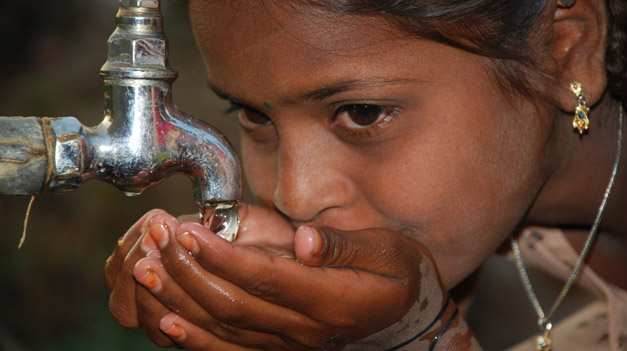
In 2010 the United Nations General Assemblyexplicitly recognized the human right to clean drinking water and sanitation and acknowledged that this is essential to the realisation of all human rights. However, to date, there is no specific human right relating to air quality – why is that?
It is now recognised that environmental harm can give rise to violations of rights to life, health, property and privacy, amongst others. International law, and a large number of national constitutions, recognise the general right to a healthy (or satisfactory, safe or sustainable) environment. The more specific right to clean water is now also being recognised at these levels, however the right to clean air is not.
In 2014 the World Health Organisation (WHO)estimated that unsafe water, sanitation and hygiene led to 2 million annual deaths from diarrhoeal disease. The WHO also reports that in 2012 around 7 million people died – one in eight of total global deaths – as a result of air pollution exposure and air pollution is now the world’s largest single environmental health risk. The statistics concerning poor water and air quality make for depressing reading.
- almost 1 billion people lack access to an improved supply
- 2 million annual deaths attributable to unsafe water, sanitation and hygiene
- more than 50 countries still report cholera to WHO
- an estimated 260 million infected by Schistosomiasis
- 4% of the global disease burden could be prevented by improving water supply, sanitation, and hygiene
Air:
- around 7 million deaths in 2012
- low- and middle-income countries in South-East Asia and Western Pacific had the largest air pollution-related burden in 2012, with a total of 3.3 million deaths linked to indoor air pollution and 2.6 million deaths related to outdoor air pollution from diseases including ischaemic heart disease, stroke, chronic obstructive pulmonary disease (COPD), lung cancer, and acute lower respiratory infections in children.
Whilst there is massive global mortality for both air and water, there is only global protection for the right to clean water and no comparable right for air quality.
How does the world respond to this unequal balance between water and air? The scale of investment to address water and air quality differs considerably:
- Water – the global size of the water market in 2013 for treatment and distribution plant and equipment for domestic and industrial use was valuedat US$557 billion.
- Outdoor Air Quality – the air quality control systems market (Flue Gas Desulfurization), Electrostatic Precipitators, Nitrogen Oxide Control Systems, Scrubber & Mercury Control Systems) will grow from an estimated$58.7 billion in 2014 to $78.0 billion by 2019.
- Indoor Air Quality (ventilation, and air conditioning systems, indoor air quality monitoring and management systems) ispredicted to grow from $3.3 billion in 2014 to nearly $5.6 billion by 2020.
Deaths due to water are driving investment at a rate of $164,000 per death, whilst for air its $9,000. This analysis is heavily skewed toward investment in the developed world, whilst the majority of deaths from air (7m) and water (3.4m) related impacts are in the developing world. Most air quality related deaths, around 4m, are due to poor indoor air quality (sometimes referred to as household air pollution).
Nearly 3 billion people in the developing world cook food and heat their homes with traditional cook stoves or open fires resulting in over 3 million deaths with women and children being the most affected. The material cost of a clean cooking stove can be effectively zero. The cost of addressing indoor air quality in the developing world are measured not so much in the cost of technology, but more about changing cultural practices and the provision of training.
In 2011 the World Bank invested $7.5billion in water projects including water supply and sanitation, irrigation and drainage, hydropower, and flood protection. In 2014 the World Bank invested $60 million in a programme with theGlobal Alliance for Clean Cookstoves.
So given the greater number of deaths and the lower cost of risk reduction, why is clean air not receiving the same attention that the right to clean water does? If air quality was explicitly recognised as a global human right, it is arguable that institutional lenders and business enterprises would devote more capital on low cost air quality related solutions. The statistics are clear, the solutions are evident, so what is the international community waiting for?
By Jim Wright (jwright@jmwe.co.uk)







